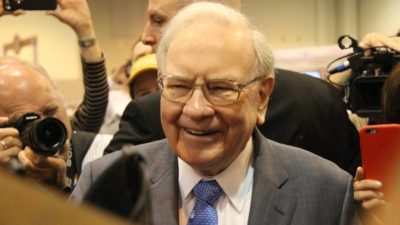Innovation is one of the buzzwords of the international business world and stock markets these days.
Low productivity growth is a significant and persistent challenge across many Western nations.
Innovation is seen as essential to turning this around. Technological advancements like artificial intelligence (AI) are among many innovation measures that companies are exploring today.
Innovation means developing new products and services that deliver new revenue. It also means developing new business methods that increase efficiency and thereby raise productivity.
At the recent ASX Investor Day, Betashares investment strategist Tom Wickenden discussed the importance of innovation in powering shareholders' returns.
He also provided some tips for investors on how to spot an innovation stock in their research.
Which are the best innovation stocks of our era?
Wickenden points out that seven of the nine listed companies that ever reached a trillion-dollar market capitalisation are United States stocks that achieved this feat through major innovation.
Those stocks are known as the Magnificent Seven. They are Alphabet Inc (NASDAQ: GOOGL) (NASDAQ: GOOG), Meta Platforms Inc (NASDAQ: META), Amazon.com, Inc. (NASDAQ: AMZN), Apple Inc (NASDAQ: AAPL), Nvidia Corp (NASDAQ: NVDA), Microsoft Corp (NASDAQ: MSFT), and Tesla Inc (NASDAQ: TSLA).
What makes them so magnificent?
The short answer is incredible revenue growth and, hence, share price growth over the past 10 years.
All seven stocks are listed on the NASDAQ-100 Index (NASDAQ: NDX), which Wickenden describes as "the home of innovation globally".
The NASDAQ 100 has many technology stocks, but that's not the only sector represented.
Among the Magnificent Seven companies, Tesla is a consumer cyclical stock.
Tesla is certainly an innovation leader among car manufacturers. It's now the second-biggest electric vehicle manufacturer in the world.
Other companies in other sectors are also innovation leaders.
In the healthcare sector, consider the companies producing GLP-1 medicines. Their innovation has led to new medicines with incredible efficacy in treating the worldwide epidemic disease of obesity.
Consider the energy companies pioneering renewables in the era of decarbonisation. And so on.
How do you identify an innovation stock?
Wickenden says innovation requires a serious commitment to research and development (R&D).
So, examining a company's R&D spending is a good place to start in identifying an innovation stock.
Take a look at the amount of money spent on R&D, the percentage of profits reinvested, and whether R&D investment is rising.
He emphasises that a large R&D spend doesn't guarantee success, so investors need to conduct further research once they've identified stocks that are investing in innovation.
Investors need to find out what products, services or business practices have improved due to R&D, and whether this has translated into revenue growth that is likely to be ongoing.
Wickenden said the NASDAQ 100 is "home to some of the most innovative companies in the world and also some of the biggest R&D spenders in the world".
Wickenden stated:
We can see … over the past 10 years huge growth of research and development spending has coincided with huge growth of revenue and ultimately earnings growth for that index compared to other companies globally and especially compared to the Australian market.
Innovation often requires companies to "cannibalise" their own market share, Wickenden explains. This means developing products and services that make a company's existing ones irrelevant.
If they fail to do so, they are likely to "succumb to new players in the market" as technology advances.
Case study: Microsoft
Ten years ago, Microsoft was a leader in locally stored enterprise software.
However, it chose to invest tens of billions in cloud computing — which would eventually make locally stored software redundant — and this has delivered exceptional revenue growth.
Between 2011 and 2014, Microsoft was the second-biggest R&D spender in the world behind Samsung Electronics Co Ltd (LSE: BC94).
Wickenden said:
Interestingly, in 2011 … they spent 90% of their research and development expenses on a cloud computing division. And … that cloud computing division is driving their growth in terms of revenue and earnings and, ultimately, their share price growth.
Today, Microsoft's cloud computing division alone delivers more revenue than Australia's Big Four ASX 200 bank shares combined.
The banks' combined revenue has been nearly stagnant at about $80 billion over many years.
This is partly because the scope for innovation in a mature sector like banking is far lower than in the information technology sector.
Meantime, revenue from Microsoft's cloud computing division has skyrocketed. Its leapt from nearly AU$30 billion in 2015 to more than AU$120 billion in 2023, Wickenden said.
Since January 2015, the Microsoft share price has risen by about 850% to US$$447.67 today.
But if doing all this research is too much trouble, Wickenden says the exchange-traded fund (ETF) Betashares Nasdaq 100 ETF (ASX: NDQ) provides a simple way to invest in many innovation stocks.
Over the past five years, the NDQ ETF share price has risen 135%, while the ASX 200 has risen 18.5%.









